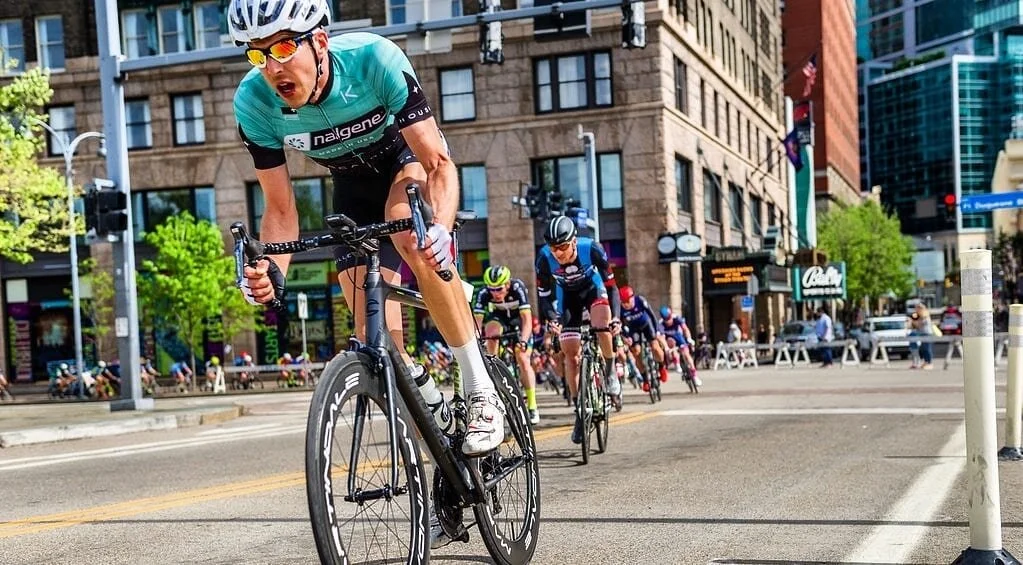Wake-Up Call: Why Lifestyle Choices Matter as Much as Training
We log the miles, track the watts, pore over TrainingPeaks graphs, and spend small fortunes on upgrades in the quest for speed. Yet sometimes, the biggest limiter to performance isn’t the interval we skip or the climb we dread—it’s the everyday choices we make when we’re not riding.
Recently, in a conversation with an athlete I coach, we stumbled onto a truth that cut sharper than getting dropped: you can’t expect your best results if your lifestyle habits aren’t aligned with your training investment.
This wasn’t just a theoretical idea. It was a moment of realization in real time, mid-race, when everything—from teammates’ discipline to his own inner dialogue—highlighted the gap between input and output.
The lesson is universal: whether you’re gunning for a national podium or going to your first gran fondo, here’s why aligning lifestyle with training matters, and how you can start recalibrating today.
The Setup: Training Hard, Living Soft
The athlete in question is dedicated. He trains 10–12 hours a week with an extremely busy life schedule off the bike: demanding job in finance, kids, etc etc...
He’s invested in coaching, power meters, and a bike setup worth more than most used cars. He pays race fees, travels to events, and carves out family time to line up at start lines.
On paper, it looks like full commitment. But what is missing?
At a recent national-level race, surrounded by teammates who were equally dialed in, he noticed something. They weren’t just serious about intervals and equipment—they were equally serious about the little things: sleep, nutrition, alcohol.
One rider set a simple boundary: one drink per week, usually a glass of wine with his wife. Another kept it even stricter: one or two drinks a month.
When it came around to him, he laughed it off: “Eh, don’t ask me.” In truth, his habit was closer to five nights a week, a casual beer while grilling or chatting with a neighbor. Not drunken binges, but enough to add calories, disrupt sleep, and subtly chip away at recovery.
That contrast was his wake-up call.
Also realizing: intervals do not equate to race days. You can TRAIN YOUR BUTT OFF, but toeing the line for your A-race without many B-races is a recipe for disaster.
Lastly: weight. He could be 15 pounds lighter. FIFTEEN. That is an entirely different cyclist, but it takes some discipline. The alcohol and sleeve of cookies isn’t helping.
These three pillars are so interlocked. Diet and alcohol go hand in hand…but so does racing and diet. They all matter. The changes we’re making because he wants TOP PERFORMANCE:
More race days
Lose 15lb this winter…play the long game, and don’t just lose weight, but change eating habits!
No alcohol from Dec 1-Sept 1…he wants to win some BIG RACES
The Investment Equation
Here’s some interesting math that we came across as well. If you’re spending all this time and money, why not go all in? It hit home:
Hours training: 500–600 annually
Money invested: ~$30,000 per year in bikes, coaching, nutrition, race travel, and related costs
Mental bandwidth: countless hours juggling life schedule, thinking about rides and their performances, reviewing notes from coaching, analyzing data on his own, etc
And yet, a few hundred empty calories and fragmented sleep cycles each week were eroding the return on all that investment.
One teammate put it bluntly:
“You’re smashing 12-minute over/unders at crazy watts, but then you’ll come home and smash beers that undo the effort. One of these things doesn’t add up.”
It wasn’t an accusation. It was a mirror.
Why Lifestyle Habits Are Harder Than Intervals
It’s tempting to dismiss things like alcohol or sleep as “fringe factors.” After all, it’s not like you’re knocking back six-packs every night or pulling all-nighters.
But here’s the reality:
Alcohol impairs sleep quality, even at low doses.
Excess calories from beer or unnecessary snacking don’t just add weight; they affect how your body partitions energy and recovers from training.
Stress from poor recovery compounds fatigue, making intervals feel harder than they should.
And unlike structured training, these choices creep in unnoticed. You can nail every workout on the plan but still blunt your progress with a casual “just one” five times a week.
The athlete admitted:
“I’m not drinking to a stupor, and I don’t even feel it most of the time. But it’s calories, it’s sleep disruption, and it’s definitely holding me back.”
The Reset: Choosing Long-Term Over Short-Term
Instead of pushing through to another big race on the calendar, he made a radical choice: hit pause.
He skipped a marquee event he loved, knowing that forcing the issue would only deepen the spiral. Instead, he went home, tackled household projects, reconnected with his family, and hit reset.
The new mantras became clear:
Mindset – Race with purpose and joy, not obligation.
Weight – Prioritize sustainable body composition goals (1 lb/week, not crash dieting).
Racing – Use local and regional races to sharpen skills, not just endless training rides.
It wasn’t about quitting. It was about aligning effort with outcome.
Lessons for All of Us
Even if you’re not chasing a national podium, the same truths apply. Here’s what every rider can take away:
1. Audit Your Inputs
You wouldn’t let a leaky tire ruin your race. Why let lifestyle leaks sabotage your season? Track the “invisible factors” (alcohol, sleep, stress, late-night screen time) that chip away at recovery and consistency.
2. Don’t Waste Your Investment
If you’re already spending hundreds of hours and thousands of dollars on this sport, don’t undermine yourself with avoidable habits. Align your lifestyle with your goals.
3. Know When to Reset
Sometimes, the bravest choice isn’t pushing through, but stepping back. Hitting pause to recalibrate can prevent burnout and set you up for a stronger return.
4. Race More
Training builds fitness, but racing sharpens instincts. Even small local events test your mind and body in ways intervals can’t replicate. They expose weaknesses and build resilience.
5. Weight Isn’t Everything—But It Matters
Yes, watts per kilo isn’t the only metric. But at higher levels, body composition becomes a decisive factor. Losing extra pounds, if even just a few, can transform your performance more than chasing another 30 watts.
The Psychology of Alignment
What made this conversation powerful wasn’t the data—it was the mindset shift.
Until that point, the athlete had treated training and lifestyle as separate silos: work hard on the bike, relax off it. But performance doesn’t respect those boundaries. Every choice—what you eat, drink, how you sleep, how you manage stress—feeds into the same equation.
Once he reframed those daily choices as part of training, the path forward became clear.
And this is where many athletes stumble. We obsess over training plans but ignore the invisible load of our lifestyle. The truth? Performance is holistic. You can’t out-train poor sleep, bad nutrition, or chronic stress.
Practical Steps to Recalibrate
So how do you apply this lesson without falling into perfectionism?
Set simple rules. Like “no drinks Sunday–Thursday” or “screens off by 10 PM.” Small guardrails go a long way.
Track one new metric. Instead of obsessing over the scale, focus on macro intake, sleep hours, or alcohol-free days.
Redefine social rituals. Instead of “beer with neighbors,” make it “sparkling water with lime.” Instead of “wine with dinner,” make it a once-a-week treat.
Embrace accountability. Share goals with teammates, family, or training partners. Just like a workout buddy, a lifestyle buddy can keep you honest.
Think long-term. Two pounds a week might sound fast, but it’s rarely sustainable. Aim for one pound per week—or half a kilo—and trust the process.
The Bigger Picture
You can’t expect high-level results if your lifestyle whispers “average” while your training screams “elite.” At some point, the disconnect will catch up to you—whether in mid-race fatigue, creeping burnout, or a stubborn plateau.
The good news? Realignment doesn’t require perfection. It requires awareness, honesty, and small, consistent changes.
Final Word
The conversation ended with a laugh and a commitment: “Next time you see me, I’ll be three pounds lighter.”
That was alignment. Training, lifestyle, and mindset all pulling in the same direction.
Because success in cycling—and in life—doesn’t come from doing more. It comes from doing the right things, consistently, across every area of your life.
So ask yourself: Are your habits supporting your goals, or undermining them?
If you’re not sure, maybe it’s time for your own wake-up call.



